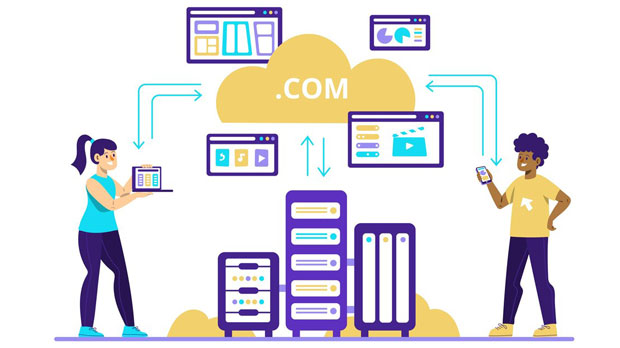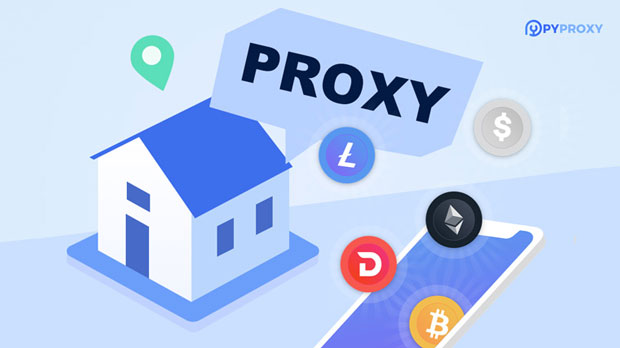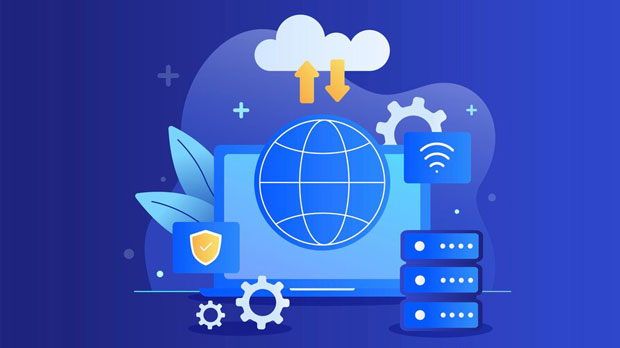Accessing websites with geographical restrictions has become increasingly important for users and businesses alike. Whether for privacy, security, or business reasons, bypassing geo-blocks is crucial. PYPROXY and iproyal are two popular proxy services that aim to address this challenge. But when it comes to bypassing geo-restrictions effectively, which one stands out? This article compares pyproxy and iproyal, analyzing their features, performance, pricing, and overall effectiveness in helping users access geographically restricted websites. By exploring these services, we’ll provide valuable insights to help you decide which one suits your needs best. 1. Overview of Proxy Services for Geo-Restriction BypassTo understand the differences between pyproxy and iproyal, it’s essential first to grasp how proxy services work. A proxy server acts as an intermediary between the user and the website. When a user requests a website, the proxy server masks their real IP address with one from a different location, thus bypassing geographical restrictions. There are various types of proxy services, including residential, datacenter, and mobile proxies, each offering unique advantages depending on the use case.Geographically restricted content is typically enforced through IP address detection, where websites can block access based on the location of the IP. To bypass this, users rely on proxy services to route their traffic through IP addresses located in allowed regions. Both pyproxy and iproyal offer solutions in this domain, but each has distinct features that may influence which one is more suitable for specific needs.2. pyproxy: A Comprehensive Lookpyproxy is a well-established provider offering a broad range of proxy services, including residential proxies, datacenter proxies, and mobile proxies. Its strength lies in the reliability and diversity of its network, making it an attractive option for bypassing geo-blocks.a. Network Size and CoverageOne of pyproxy’s key strengths is its large pool of residential IP addresses. Residential proxies are valuable because they are less likely to be flagged or blocked by websites compared to datacenter proxies. pyproxy claims to have a global network of over 2 million residential IPs across different countries, which makes it a solid option for users who need to access content from a wide range of locations.b. Performance and Speedpyproxy’s performance is generally stable, offering decent speeds for most use cases. However, the speed can fluctuate based on the location and type of proxy selected. Residential proxies, while effective in bypassing restrictions, tend to be slower compared to datacenter proxies. For users looking for speed, pyproxy offers a variety of proxy types, allowing them to choose the one best suited to their needs.c. PricingWhile pyproxy offers competitive pricing, its residential proxy services can be relatively more expensive than datacenter proxies or some other providers. However, considering the advantages of residential proxies—such as their ability to bypass more stringent geo-restrictions—many users find the cost justifiable.3. iproyal: A Competitive Contenderiproyal, while not as widely known as pyproxy, is a solid player in the proxy market. It provides users with access to a network of high-quality residential proxies, which are ideal for accessing geo-restricted websites.a. Network Size and Coverageiproyal also offers a network of residential IPs, but it doesn’t boast the same scale as pyproxy. While it offers good coverage in certain regions, its overall IP pool is smaller. However, for users targeting specific countries or regions, iproyal may still offer reliable access, especially if the geo-restrictions are not overly stringent.b. Performance and Speediproyal offers competitive speeds, but like pyproxy, users may experience slight slowdowns when using residential proxies. For those prioritizing high-speed connections, iproyal also provides options for faster datacenter proxies. However, the key advantage of iproyal lies in its consistency and ability to offer reliable performance for most standard browsing and streaming tasks.c. PricingIn terms of pricing, iproyal tends to be more affordable than pyproxy, particularly for users who don’t require a vast range of global IPs. This makes iproyal an appealing option for users on a budget but still looking for high-quality proxies to bypass geo-restrictions.4. Comparing pyproxy and iproyal for Geo-Restriction BypassNow that we’ve explored the individual features of pyproxy and iproyal, let’s compare their effectiveness when it comes to bypassing geo-restricted websites.a. Global Reach and Coveragepyproxy has the clear edge in terms of global reach. With a vast pool of over 2 million residential IPs spread across different countries, it can help users access content from virtually anywhere in the world. iproyal, while reliable, has a smaller network, which may limit its effectiveness in accessing websites from certain regions. For users who need extensive global coverage, pyproxy is the more suitable choice.b. Proxy Types and CustomizationBoth services offer residential and datacenter proxies, but pyproxy’s extensive range of proxy types, including mobile proxies, provides more flexibility. Users can select the type of proxy that best suits their needs, whether for speed, anonymity, or a specific location. iproyal, on the other hand, focuses mainly on residential proxies, which are great for anonymity but may not always offer the same speed as datacenter options.c. Speed and ReliabilityWhile both services offer stable performance, pyproxy has a slight edge in terms of reliability. Its larger network allows for more consistent speeds, especially when accessing websites in countries with higher traffic. However, both services may experience occasional slowdowns when using residential proxies, as these are naturally slower than datacenter proxies.d. Pricingiproyal is more budget-friendly than pyproxy, especially for users who don’t require the sheer scale of global IPs that pyproxy offers. If cost is a major consideration and the user only needs to access geo-restricted content from specific regions, iproyal could be a more cost-effective solution. However, if global coverage and flexibility are more important, pyproxy’s higher pricing may be justified.5. Use Cases for pyproxy and iproyalTo make an informed decision, it’s essential to consider the specific use case.a. For Businesses and Large-scale OperationsBusinesses that require access to a wide range of geo-restricted content or need to conduct global market research would benefit more from pyproxy’s expansive network. Its vast number of residential IPs allows for diverse access points, which is crucial for large-scale operations.b. For Budget-Conscious UsersFor individuals or small businesses with a more limited budget, iproyal offers a good balance of quality and affordability. If your requirements are more localized, iproyal can be a suitable alternative without compromising too much on performance.6. Conclusion: Which Proxy Service is More Effective?In the battle of pyproxy vs. iproyal, the choice depends largely on your needs and priorities. pyproxy offers superior global coverage, more proxy options, and slightly better performance, making it the best choice for users with expansive geographical needs or those seeking the highest level of anonymity. iproyal, while more limited in terms of IP pool size and geographical coverage, offers a more affordable solution without sacrificing too much on quality.For users who prioritize cost and don’t require a vast selection of global IPs, iproyal is a solid choice. However, for those who need a more robust and flexible solution for accessing geo-restricted content across a wide range of locations, pyproxy stands out as the more effective option. Ultimately, both services provide valuable tools for bypassing geo-restrictions, and the right choice will depend on the specific goals and requirements of the user.
Oct 26, 2025



































































